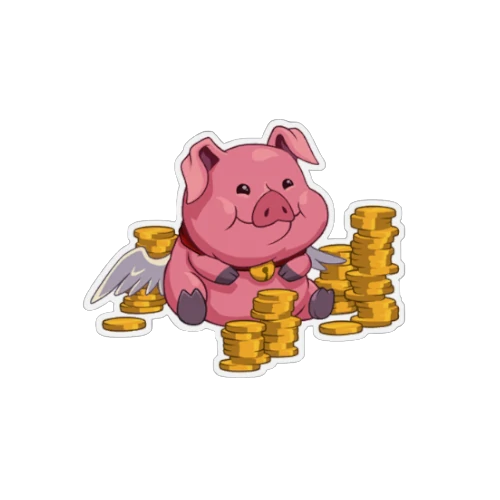Valorant Economy 101 - A Guide to Manage Your Credits
Learn how to spend your money in Valorant using this quick economy guide!
Learn how to spend your money in Valorant using this quick economy guide!
Does it constantly feel like you’re always short credits to full buy every round? Are you confused why your teammates are telling you to spend nearly all of your credits on a gun right after you won a pistol round? This quick guide to managing your credits in Valorant will show you how to be a pro in the buy menu.
Credits earned per round is not always a set number to remember. It is fluid and changes with the game as it is played out. Not many players are aware of the credits they earn per round, especially at lower level gameplay. The values of credits change depending on how the match plays out. For example:
The match starts everyone off with 800 credits.
You earn 200 credits per kill.
On the Attacking Side, you earn 300 credits each for planting the Spike.
(Defusing the Spike will win you the round, NOT give you extra credits)
A team earns 3000 credits per member for a Round Win.
With those numbers set, here is where it can fluctuate for the losing side:
A team earns 1900 credits per member for a Round Loss.
A team earns 2400 credits per member for 2 Round Losses in a row.
A team earns 2900 credits per member for 3+ Round Losses in a row.
If a player survives a round, they will only be granted 1000 credits since they will carry their weapon over to the next round.
(This is why it is sometimes better to die from a spike explosion than to save a weak gun or pistol. The other team doesn’t gain the 200 extra credits per kill.)
It is impossible to always buy the best gun and abilities every round. Knowing how to manage your credits so that you can do that as much as possible is important to give yourself and your team the best chance at winning the match. Here are some terms you might hear your teammates say to dictate when and what to buy:
A Full Buy describes purchasing the best weapon possible (Phantom, Vandal, Operator, or Odin) as well as Heavy Shields and Abilities.
A Half Buy (aka Light Buy) describes a round in which you must purchase a weapon that does not break the bank but allows you to be competitive in a given round. Light buys include weapons such as: SMGs, Shotguns, Marshal, Bulldog, and Guardian. This also includes a mix of Light Shields and Heavy Shields. The range of weapons and shields are large because the importance of half buys is to ensure that you will be able to afford a full buy the next round. You must save accordingly as full buys are something you should strive to afford as many rounds as possible.
An Eco Round (aka Save) describes a “throwaway” round in which you and your team are in dire need of credits. This is a round where everyone keeps their classic or only buys pistols. A key to a successful save is to rush a site and try to get as many kills as possible. This not only drops rifles for your team to use in the round, but it also hurts the enemy team’s economy since they have to rebuy the rifle for the next round. When an eco-round is won, the game rewards you with a “THRIFTY”.
A Force Buy is in the name; it is when your team is forced to disregard future economy. You are forced to buy as best of a buy you can to either not lose the match or if credits reset. This happens if you are facing a loss or the round before halftime.

Now that you know how credits are allocated and what types of buys you can use per round with those credits, you can now understand what to buy and when starting off with the first round of the game. After the first 3 rounds, it is easy to understand the rhythm and flow of the game to know when to buy and when to save. The first round of the game is called the Pistol Round.
The first round is referred to as the Pistol Round because it is impossible to have any gun other than a pistol. The Agent you select affects the gun you buy at the start of the game. Some agents’ abilities are more important than others since they have a greater effect on helping the entire team. Abilities such as a Sova Drone or smokes are needed to help get easier opportunities to play the objective or kill enemies. In this case, it is better to focus your credits on purchasing abilities than it is to purchase a better pistol than a Classic. In other cases where the abilities are not beneficial to everyone, buying a better pistol is great for a weapon advantage against the enemy team. The go-to pistols to buy tend to be either a Ghost (mid to long-range) or a Frenzy (short to mid-range).
The most important thing to note in the second round is if you win the pistol round, half buy second round for a huge advantage. There is no reason to save your pistol and use it next round against an enemy team that is saving to buy the third round. A half buy in the second round includes either a Spectre or a Bulldog. The safer choice is to buy shields and a Spectre, however there is a possible implication on the third round. A Bulldog is a riskier choice since it is more expensive, however it can be beneficial if you survive to carry it into the third round.
If you lose a pistol round, save the next round to full buy the third round.
The third round is an important round that dictates the rest of the half:
If you lost the first two rounds, your team should have enough money to full buy in the third round.
If you lost the pistol round and won the second round, a half buy from both sides for equal footing would dictate the weapons used in the third round. The same goes for winning the pistol and losing the second round.

If you win both pistol and second round, the third round will turn into what is called a Bonus Round. In a Bonus, you will carry over the Spectre or Bulldog you have purchased in the second round into the third round. Your team will be playing this round at a disadvantage, however in return you’re adding 2900 extra credits to your economy by not purchasing a Phantom or a Vandal.
The Spectre and Bulldog can both compete with the Phantom and Vandal although the latter guns are better. Buying in the second round allows you to still stay competitive in the third round, while securing a healthy team economy. This is where gambling on a Bulldog in the second round can pay off since the Bulldog can compete with Phantoms and Vandals better than a Spectre. If you were not to participate in the Bonus Round, you run into the potential of spending 2900 credits and dying in an even battle, where in the next round you must spend again on a weapon, hurting your team economy.
Once the crucial first three rounds are done, it is easy to gauge when to fully commit to a buy or when to save money. The number of credits you need to look for is:
3900 credits
4500+ credits
Having 3900 credits allows you to have enough money to purchase a rifle and full shields. Whereas anything 4500 credits and more allows you to have enough to purchase a rifle, full shields, and your abilities. Knowing these numbers, you could then check the scoreboard and see how many credits your opponents have. This will help you gauge what kind of buy they will be working with for the given round. This type of intelligence lets you play the round smarter, which ultimately leads to more round wins. Aim to at least have 3900 credits, or else you will have to either half buy or save.
Understanding the economics of Valorant is easy once you understand how the game allocates money. You must remember that this is a team game so buying weapons for your teammates is encouraged as long as it does not bankrupt your personal economy. Only buy a rifle for a teammate if you will have enough for a rifle for yourself the next round, if not, players should be saving credits for a full buy next round. If a teammate needs to focus on buying abilities to help the team, it is always good to buy them a gun if the player can afford it and if it does not ruin the player’s economy.
Now that you know the terminology and when to buy what gun, you will put yourself at an advantage in your next game. Make sure to always remember to try to full buy as much as possible and have fun fragging!